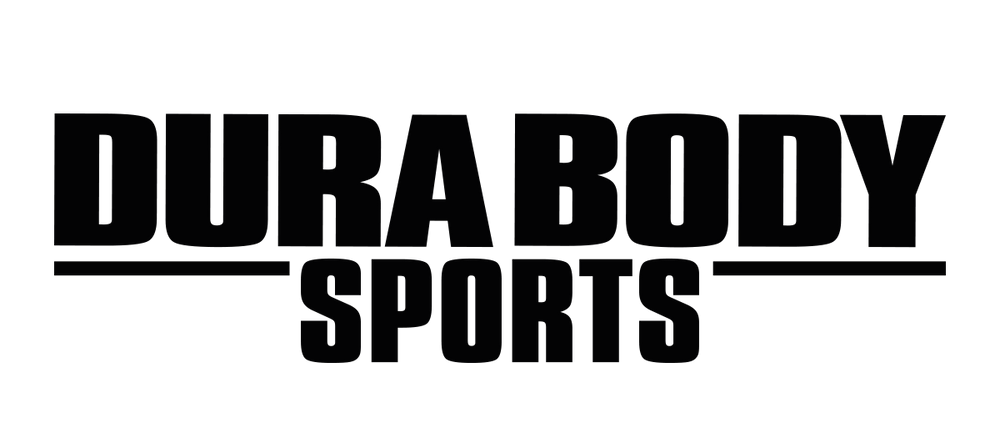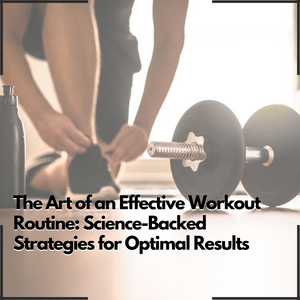The Art of an Effective Workout Routine: Science-Backed Strategies for Optimal Results
Embarking on a fitness journey is a common goal, but achieving your desired results goes beyond just sweat and dedication. The key to unlocking your body's potential lies in crafting a workout routine that is not only tailored to your goals but is also supported by scientific principles. In this guide, we will dive into the intricacies of creating an effective workout routine, focusing on the vital aspects of recovery, training intensity, and consistency. Additionally, we will explore three popular workout splits: the Bro Split, Push Pull Legs, and Full Body routines.
The Crucial Role of Recovery
In the pursuit of building a strong and healthy body, recovery must be prioritized. Exercise-induced muscle damage and fatigue are inevitable outcomes of intense workouts. Adequate recovery allows your muscles to repair and grow stronger, contributing significantly to overall progress. Incorporate these science-backed recovery strategies into your routine:
Sleep: Quality sleep is essential for muscle repair and hormone balance. Aim for 7-9 hours of uninterrupted sleep each night.
Nutrition: Consume a balanced diet rich in protein, carbohydrates, and healthy fats. Most people just simply do not consume enough protein and micronutrients, so eat your lean proteins and vegetables people! Check out our recipe blogs here
Active Recovery: Engage in light exercises or activities such as walking or yoga on rest days to stimulate blood flow and aid recovery.
Training Close to Failure
Training intensity is a key driver of muscle growth and strength development. Training close to failure, also known as "training to failure," involves pushing your muscles to their limits during each set. This method increases muscle fiber recruitment and triggers greater metabolic stress, which promotes muscle adaptation. However, it is important to approach this technique with caution to avoid overtraining and injury.
Progressive Overload: Gradually increase the weight or resistance you lift to ensure continuous muscle adaptation. This prevents plateaus and promotes consistent progress.
Repetition Range: The rep range you use is based on your goals. The simple answer is, it depends. For hypertrophy, we are more of a fan of the 5-9 rep range. Research has shown that hypertrophy can occur with the range of 5-30, but the most important thing is you are taking your lift close to failure.
Choosing the right Movements: Incorporate exercises that isolate specific muscle groups better if you want to grow that muscle more effectively. For example, if you want to grow your front delts more because they are a weaker point, do an exercise like a machine seated shoulder press. Also, use tools like lifting straps if you want to help take a specific muscle group to failure better. Our forearms are no where near as strong as our back, so to really push your back further using lifting straps can be crucial.
The Power of Consistency
Consistency is the cornerstone of any successful workout routine. Regular exercise creates a cumulative effect that leads to sustainable results over time. Follow these strategies to maintain a consistent routine:
Set Realistic Goals: Define clear and achievable short-term and long-term goals to stay motivated and focused.
Schedule Workouts: Plan your workouts in advance and adhere to a consistent training schedule. Treat your workouts as non-negotiable appointments.
Listen to Your Body: While consistency is vital, it's equally important to recognize when your body needs rest or recovery. Avoid pushing through when you're fatigued or injured.
Exploring Workout Splits
Workout splits refer to how you structure your training sessions throughout the week. Honestly, when you equate volume and intensity, it really does not matter much what your split is. The most important part is being consistent and sticking to your program.
Here, we will discuss three common workout splits and their benefits:
"Bro Split": The bro split involves training one muscle group per day, typically targeting a specific body part (e.g., chest, back, legs) in each session. While this approach allows for focused training, it may lead to longer recovery times for each muscle group.
Push Pull Legs (PPL): The PPL split divides training days into push exercises (chest, shoulders, triceps), pull exercises (back, biceps), and leg exercises. This split provides a balanced workload and allows for greater frequency of training each muscle group.
Full Body Routine: The full body routine involves working all major muscle groups in a single session. This split is ideal for beginners and individuals with limited time. It promotes frequent muscle stimulation and enhances overall strength and endurance.
Crafting an effective workout routine is a blend of science and dedication. Prioritizing recovery, training intensity, and consistency are the pillars that support your journey to a healthier, stronger you. Whether you opt for a bro split, push pull legs, or a full body routine, remember that customization is key. Listen to your body, make gradual progress, and celebrate each milestone on your path to optimal fitness.


